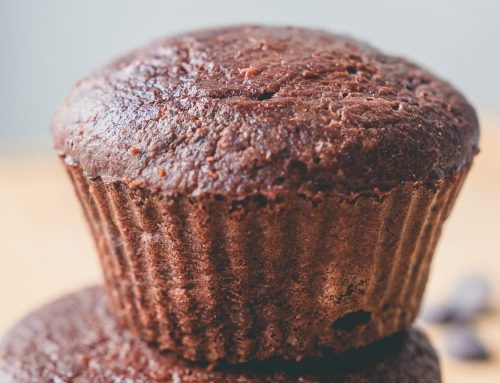Vascular headaches, or migraines, are a problem for many people, and if you have never had one you may consider yourself fortunate. Many people live in fear of the potential triggers and factors that can bring on a migraine, struggling to try and understand what is happening and why their head hurts so badly.
In order to better understand migraines, we must ask “Why do the vascular mechanisms that supply the brain become abnormal, and what can be done about it?” The standard of care in the health community seems to focus only on symptom-suppressing pain management, which even at best is merely a mild palliative in the real management of this malady. In nutritional practice using foundational measures to bring about balanced body physiology, a great deal of success has been achieved in learning about the underlying cause of migraines and supporting the body to prevent headaches from ever developing.
First let’s review what we know about migraines from experience: a prodromal phase precedes the pounding pain characterized by hallucinations, visual disturbances with halo effects around objects, photophobia (light sensitivity), impaired mentation, and nausea; a secondary phase follows, characterized by severe pain and pounding, more severe photophobia, and nausea (in fact the migraine usually abates after finally throwing up). This resolution of feeling normal after vomiting may be the greatest insight into the causative mechanisms at work.
There are two stages of migraines, both characterized by profound changes in the vascular supply to the brain. The first prodromal stage is experienced because of an initial vascular constriction or starvation, creating secondary localized hypoxia (loss of oxygen), and this is why the brain hallucinates; it does not have the necessary blood/oxygen for proper function. Then the vasculature, apparently fatigued by the effort of constriction, seems to lose its tone and simply dilate, sagging into the surrounding structures and creating the pounding pressure in the head that is so crippling. Most drug therapies seek to interrupt this vascular phenomenon. In fact, in the past ergot amine drugs were employed even though they potentially compromised circulation to the heart at the same time. Even now very little is offered except to attempt to interrupt the vascular dilation, which, while it provides essential relief, is not a correction to the cause of the condition, and it also costs the person a few days of being mildly drugged.
It seems that these questions need to be asked: Why does the vascular phenomenon occur, and what sets it off? Most chronic migraine sufferers know that certain foods and smells, such as chocolate, citrus, or other aromatics and perfumes can trigger the migraine. Certainly food sensitivities and allergies can exaggerate the migraine syndrome, and exploring this avenue may begin to provide insight into preventing the onset of the vascular event. Yet again, why is it that a food or smell can activate a migraine complex? I learned early in practice that simple liver/gallbladder cleansing seemed in many cases to resolve headaches and migraines, and from this the following explanation is proposed.
When the upper digestive system becomes imbalanced, especially the ability of the stomach to create the proper acidity, empty its contents into the small intestine, and prevent the build up of fermentive weaker acids in the stomach, distress is referred back up the vagal nerve distribution reporting to the brain that imbalance exists in the stomach. When this nervous tone exceeds minor amounts and begins to shout, there is a spillover effect into the adjacent basal brain centers that control vascular supply. As this spillover occurs, the vascular centers are stimulated to the degree that they increase vascular tone, and constriction occurs so that too little blood is reaching the oxygen/nutrient hungry nervous tissue in the brain. After a period of constriction, the vascular structures, or perhaps the vascular nervous control centers, fatigue and dilation occurs, until of course the stomach vomits and empties itself of the distress/stimulus causing the vagal nervous feedback.
What if instead of waiting to throw up we were able to restore the normal stomach balance and interrupt the vagal/vascular feedback phenomenon before it begins? This is done with Phosfood (orthophosphoric acid), 25 drops in water hourly (or as directed) as soon as the first sensation of prodrome comes on, or one can use Apple Cider Vinegar or fresh lemon juice (1-2 Tbsp in water). These are simple ways to acidify the stomach and assist in restoring the proper environment to the upper digestive processes. More extensive nutritional supplementation may be required to bring about repair and recovery of upper digestive competence, especially focusing on the gallbladder delivery of bile for fat digestion and emulsification, so that this imbalance is no longer triggered,
Often migraines are activated by hormonal variations associated with menstruation or following pregnancy, which at first seems mysterious. When the stomach and gallbladder/pancreas functions are balanced, even these hormonal triggers are reduced and less apt to activate the migraine. Also it is important to note that the pituitary, so involved in menstrual cycles and ovarian function, is the same glandular control for upper digestive function. It has always been well known that pituitary support can enhance digestive secretions and efficiency, which may be why variations in the pituitary change digestive conditions and activate the migraine complex.
It is always exciting to correct underlying causes and see conditions change. There are always so many other invisible effects balanced when such foundational corrections are made. Indeed it is a cascade of improved function and health, most profound of which is the relief available to those suffering migraines.




Leave A Comment